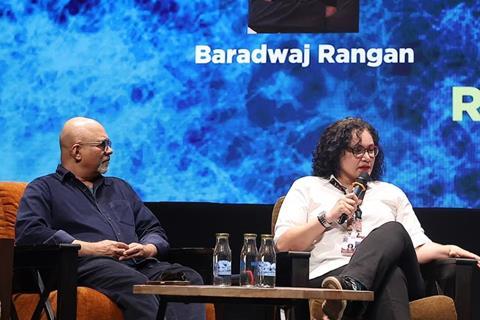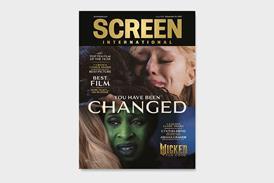
Just as filmmaking was upended by the shift from celluloid to digital, film criticism was revolutionised by the change from analogue to digital media. New technology ushered in an era of bloggers, star-ratings and attention-starved audiences and re-wrote the business of writing about films for a living.
A masterclass on film reviewing this week at the International Film Festival of India (IFFI) comprised German journalist Barbara Lorey de Lacharriere; veteran Indian writer Megachandra Kongbam; Sudhir Srinivasan, who produces long-form YouTube videos and dialogues with filmmakers; and Screen International’s Hong Kong-based Elizabeth Kerr.
Lorey de Lacharriere offered the simplest of description of change during her criticism career. “The major shift is losing mainstream or [broadsheet] print press for film reporting, and the switch to social media and online magazines,” she said.
Kongbam described the process as inclusive but unsettling.
“This digital era has become as more democratic with the participation of many influencers in the trade,” he said. “But it has created an alarming situation where there is sometimes confusion among the audience about the sanctity of the pillar or medium.”
“One change is that many people started writing and with that emerged an instant feedback mechanism, many people started responding as well. That evolved into what we now know is a social media culture and where earlier there were 10 critics, now there are thousands and thousands.
“Whether we should call them critics [is less clear], but let’s call them people who talk about movies and they are all putting out little bursts of information or a single observation on Twitter. There are no longer gatekeepers. Anybody can go out there. And the flip side is that there’s a lot of negativity.”
Srinivasan, a late starter who was an engineer before became a professional film critic, said that he has grown with the shifting media.
“I did not ever think I would be making or speaking about films in the visual medium,” he said. “I always thought of myself as one of those people just holed up in a room and writing about films. At one point, I had to put out my thoughts in the format that the world was veering towards and that is how I started speaking about films on video as well.
“If I was writing 1,500 words earlier about the film, now I’m making 10-15-minute videos. What gives me great joy is that by-and-large my responses towards films, have not necessarily changed, even if the structure has changed.”
“Everyone knows the role of the film critic as it shapes cinema by providing context, interpretation and evaluation of films for audience, influencing consumer decisions and artistic movements,” said Kongbam.
However, in India, there is more to it. “In India, we have our own objective [which is] to promote and develop good film culture, lessons and reasoning through cinema of the Indian film industry and to enlighten society.”
Lorrey de Lacharriere also described lofty ideals and a process of benign enlightenment. “When I came to India for the first time in 2000, I discovered regional cinema in India, which was not much known in Europe. This was addressing an audience that was not used to hearing about these films and couldn’t even see them. So, my interest was sharing the experience.”
Whether those lofty ideals are shared by most film writers today, seems unlikely. Kerr described being muscled out of screenings by influencers or “key opinion leaders” (KOLs), as they are called in some parts, while other speakers described increasing pressure from film publicists.
“Sure, they have hundreds of thousands of followers, but KOLs get hired by the biggest film distributors,” said Kerr. “Because they are paying them, the little guy who doesn’t have that kind of marketing budget, his film goes by the wayside.”
She also described different approaches, varying from academic criticism of the art of cinema, through the social media- and ratings-driven, to that of writing for a trade publication like Screen International.
“Screen’s audience wants to know if a film is saleable,” she added. “What was the director’s last success? How it was funded? As a critic you have to find your outlet, your voice and the audience. You have to be nimble enough to change on a dime to meet each of those demands”.















![[Clockwise from top left]: Paul Thomas Anderson, Chloe Zhao, Ryan Coogler, Park Chan-wook](https://d1nslcd7m2225b.cloudfront.net/Pictures/274x183/9/0/0/1467900_writerdirectors_192733.jpg)







No comments yet